The 50 best Metallica songs of all time
The 50 best Metallica songs to ever have bothered polite society
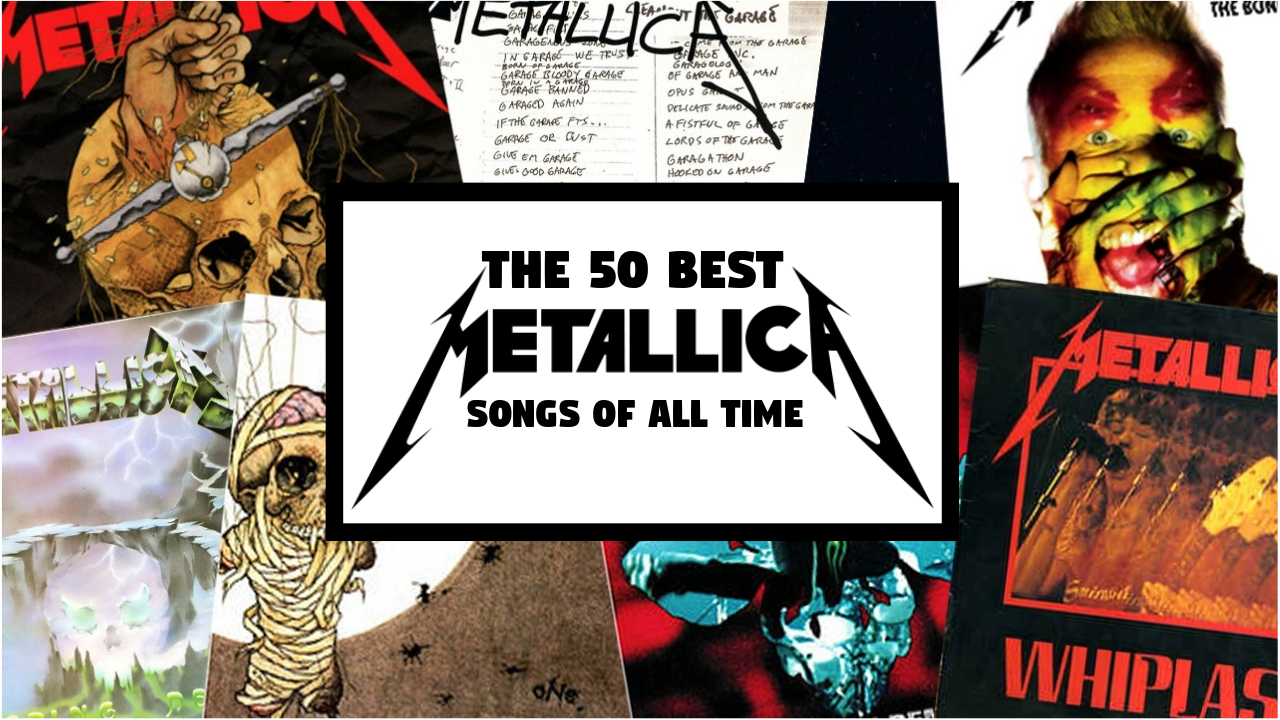
Metallica songs have played a colossal role in shaping the sound of metal music since James Hetfield and Lars Ulrich came together in the dingy garages of San Fransico's bay area in 1981.
With their early music they defined thrash metal as we know it, while in their classic era – with Hetfield and Ulrich flanked by the late, legendary bassist Cliff Burton and super-shredder Kirk Hammett – they laid the foundations for one of rock's more inventive back catalogues. Over the course of 40 years, they've become pretty much the biggest heavy band the world's ever produced.
Hetfield and Ulrich originally bonded over a shared love of beer, NWOBHM and good, old-fashioned American rock'n'roll, but what set Metallica apart from their contemporaries was their resolute open-mindedness when it came to experimentation. From the classical influences brought in by Burton, musically the most gleefully open-minded member the band has ever had, to the Southern-fried sounds of Load to, erm, Lulu, the fact that Metallica continually forced themselves into new sonic grounds – sometimes to the brink of self-destruction – is what's kept them relevant.
Has it all been good? No. To be polite about it, some eras have been more successful than others. It likely won't surprise readers that the top 10 in this list is dominated by tracks recorded before the turn of the century – with just a solitary St Anger track breaking the top 50. Spoiler alert: Lulu's nowhere to be found.
Here, Metallica's definitive top 50 songs. There's some surprising entries, and some not-at-all surprising entries. But it's all Metallica, and it's all bone-rattlingly brilliant.

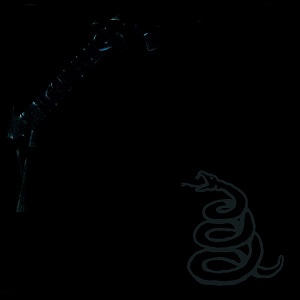
50) Of Wolf And Man (Metallica, 1991)
With over 20 million copies sold worldwide, Metallica’s eponymous fifth album, better known as the ‘Black’ album, is one of the biggest-selling metal albums ever. Famously, the San Francisco quartet had sold one million records with 1986’s Master Of Puppets without releasing a single or ever making a promotional video, but five years on, their stated aim was to take over the mainstream, or as their drummer Lars Ulrich would memorably state, to “cram Metallica down everybody’s fucking throat all over the fucking world.” With Metallica, they accomplished just that.
‘Off through the new day’s mist I run. Out from the new day’s mist I have come’ – what a fabulously vivid opening couplet to one of the ‘Black’ album’s most underrated gems. A powerful groove and evocative imagery have cemented Of Wolf And Man’s place as a long-standing fan favourite.
Sign up below to get the latest from Metal Hammer, plus exclusive special offers, direct to your inbox!

49) Metal Militia (Kill ‘Em All, 1983)
While it is eminently credible to attribute the genesis of thrash to bands that were operating prior to Metallica’s arrival on the metal scene – Motörhead, Venom, Anvil and Accept all have a decent claim to have kick-started the whole thing – there is little doubt that the official starting point for the genre is the band’s debut, Kill ‘Em All. Steeped in NWOBHM thunder and powered by hardcore punk snot ‘n’ bile, Metallica were the ultimate sonic kick up the backside for a flagging scene and songs like this one redefined what it meant to be fast, furious and heavy as fuck. Never mind how far the band have since strayed from their original ideals – this is the essence of thrash.
“Obviously, a song like Metal Militia has a different lyrical vibe to it than some of the stuff we came up with over the next few years,” Lars Ulrich told Metal Hammer in 2016. “‘Leather and metal are our uniforms’? I wish I could tell you 35 years later that it was a kind of pisstake, but there wasn’t a lot of irony present in Southern California in the early 1980s... As we started figuring out what we were doing, we deliberately started to move away from what we perceived to be the heavy metal clichés – the sword and sorcery imagery, the leather and studs, and all that. By the time we sat down to write the next batch of songs, we started getting into things like fear and manipulation, the idea of being trapped in situations you can’t get out of.”
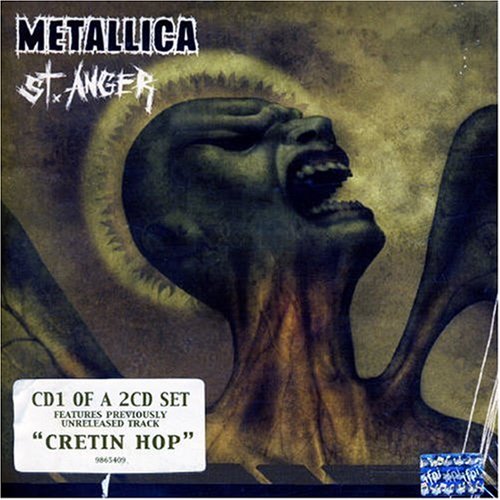
48) St. Anger (St. Anger, 2003)
St. Anger is the album that many Metallica fans still love to hate – just check out the myriad memes it spawned in its wake – which explains why its scant entries in this list are firmly consigned to the higher numbers.
As the Some Kind Of Monster documentary starkly and deftly illustrates, Metallica were at their lowest ebb both in regards to their personal relationships and their art when it came time to make their eighth studio album. In many ways, St. Anger was the first album since Kill ’Em All that truly reflected who the people in Metallica were: conflicted, overstretched, insanely rich, and now, suddenly, immensely self-doubting. Still, the title track was one of the album’s undeniable high points: a crunching tour de force of snatched riffs and a melee of drum sounds, poised and cleverly layered with Hetfield’s voice double-tracked; spoken and sung over a riff reminiscent of Battery. Most importantly, for all its surface chaos, the song conveyed the simplest of messages: Metallica are back – don’t fuck.
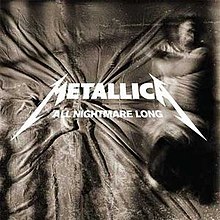
47) All Nightmare Long (Death Magnetic, 2008)
As stubborn, uncompromising and pig-headed as Metallica have always been – and those are compliments by the way – the brutal fan reaction to the unloved St. Anger album was difficult for James Hetfield and Ulrich to ignore. And so when the quartet prepared to record its follow-up set, much was made of the fact that this was Metallica ‘returning to the roots’, with the band and producer Rick Rubin citing …And Justice For All and Master Of Puppets as inspirations for the record.
This back to basics approach yielded dividends – not least on the likes of All Nightmare Long, a creeping eight minute epic with more pummelling killer riffs than you could shake a stick at.
This song’s video is no doubt at least partially responsible for its popularity among fans. Launched with its own hoax backstory – with Kirk Hammett gamely claiming he bought this mysterious film in Russia and became obsessed with it – the band-free promo combines mock-historic documentary footage of Soviet experiments in tissue revival with effective stylised zombie apocalypse animation. “It was very nerve-wracking to be a huge fan of the biggest band in the world and to want to impress them,” admitted director Roboshobo to Metal Hammer, “so I was relieved to have their approval.”
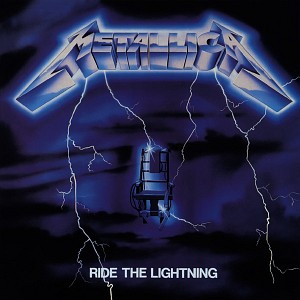
46) Trapped Under Ice (Ride The Lightning, 1984)
Metallica’s second album, Ride The Lightning, was released on July 27, 1984 – just a year and two days after Kill ’Em All. But the musical gulf between the two was immense. Where the debut was a blur of speed and attitude, the follow-up was the work of a band exploding with ideas and confidence.
Like the title track, this Ride The Lightning album track featured ideas Hammett brought along from his old band, Exodus – in this case the riff in the verse is based around that band’s then-unreleased song Impaler.
“They came from songs I had written, music I had written,” he told Metal Hammer in 2016. “I consider them my parts. I didn’t feel guilty about that, but I did feel guilty about leaving the band I started in high school. I’ve known [Exodus drummer] Tom Hunting since I was 16 years old, I’ve known [Exodus guitarist] Gary Holt since I was 17. We’re all close to this day, but there was a lot of guilt there for a while. A little bit of remorse. But I really felt that Metallica was my calling. I felt more comfortable playing in Metallica than I ever did in Exodus, so go figure.
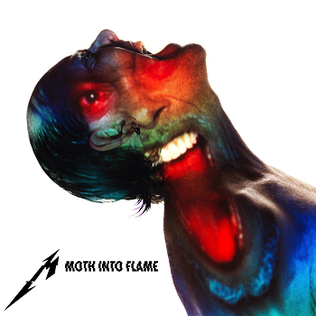
45) Moth Into Flame (Hardwired… To Self-Destruct, 2016)
For many Metallica fans, the wait for a follow-up to 2008’s relatively well received Death Magnetic was a mixture of feverish anticipation and premonitory nervousness. By dragging out the album’s gestation for the best part of a decade, Metallica hinted at a reluctance to commit to any one musical path. But when Moth Into Flame dropped in the summer of 2016 it was, by most people’s reckoning, as good as anything Metallica had released since the 'Black' Album.
A monstrous slab of authentic heavy metal, the album’s second single exhibited strong links to the band’s 80s triumphs without sounding like a half-hearted attempt to go back to their roots, beginning with a two-guitar old school riff, punctuated by Lars riding a hi-hat that gradually built into a towering main riff. In the past, Metallica had been sometimes been guilty of labouring a good idea into the ground. With Moth Into Flame, they seemed conscious of that and avoided hanging around on one riff too long – and just check out Ulrich’s flamboyant fill four minutes 35 seconds in.
The lyrical inspiration for the song? Somewhat surprisingly, it was Amy Winehouse. After watching a documentary about the singer's struggles with addiction, Hetfield was moved to write about it. "Just watching that movie was extremely saddening – how her life went from such a lively joyous person, to someone who was just trying to escape the reality of where she was," he said in 2016.
“It really hit me in the one part of the movie where she was lost in her mind, it seemed, and she was just leaving her flat in England.
“The press were just hanging out in front of her place all the time, snapping these pictures of her. ‘Hey, Amy, how’s it going?’ Talking to her like they know her.
“They just don’t notice – they wouldn’t say, ‘You look skinny, you look unhealthy.’ There was a total misconnection there with reality.”

44) The Unforgiven III (Death Magnetic, 2008)
The third in the sprawling Unforgiven trilogy – which began with the ‘Black’ album’s brooding meditation on life, was reprised for Reload and offered up for a final time in Death Magnetic – this instalment dripped with country’n’western melancholy and cinematic grandiosity.
Hetfield told MTV that the song was “a continuation of the same storyline about sin and consequence, forgiveness and unforgiveness,” as its predecessors, while adding it was his favourite track on Death Magnetic.
While much was made of Metallica returning to their roots on Death Magnetic, this was the most literal iteration of that, and for Metallica fans who still dared to believe, it was the sound of victory. Did it trump their ‘Black’ album offering? Perhaps not, but it was the next best thing.

43) Bleeding Me (Load, 1996)
Metallica’s most unfairly maligned album, Load suffers from the fact that its place in Metallica’s lineage comes immediately after release of the phenomenally successful 'Black' album: suddenly Metallica had ten million new fans worldwide, most of who were adamant that this wasn’t what Cliff Burton, a musician they didn’t know existed 12 months previously, would have wanted from the band. Well, that and the wholesale image overhaul that accompanied the new material. But in retrospect, much of the outrage Load inspired seems comically overblown. At its best – like on the seething Bleeding Me – the album offered a bold, mature and liberating re-imagining of the Metallica sound.
Bleeding Me starts gently, a melancholic wander through Hetfield’s psyche, with the dynamic building slowly, surely, classically into one of Metallica’s greatest non-classic classics. Totally removed from anything else the band had recorded to that point, its push-and-pull flirtations of trippy and bluesy riffing, and the solid yet unpredictable Ulrich masterclass in making the track ebb and flow giving way to a downright evil final flourish, is indescribably brilliant.
The guitar even teeters into the Floydian as it wanders through Hetfield’s tricky emotions, and it’s easy to hear producer Bob Rock’s guiding hand in those first four minutes or so. Then, at 5.02, comes part two; the head-first tilt into a thicker, heavier sound as Hetfield screams ‘I can’t take it!’ repeatedly. By the time Hammett is leaving his solo imprint, just before entering the seventh minute, you realise you’ve been privy to the first Hetfield ‘journey’ post mega-success.
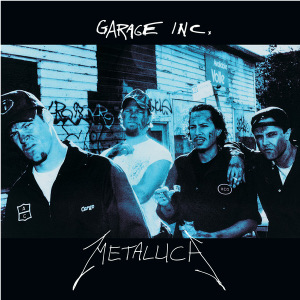
42) Am I Evil? (Garage Inc., 1998)
They might be stadium rock superstars now, but just like every other band, Metallica started out playing cover versions in a garage. So, in 1998, in order to pay homage to their influences, Garage Inc. – a compilation of covers of some of the band’s favourite songs – was born.
Its ultimate highlight was undoubtedly the brilliant Am I Evil? Originally released as the B-side to Creeping Death, later making its way on to Garage Inc., the slow build to this interpretation of the Diamond Head song highlights Burton’s ability to create moods and paint pictures with his choice of bass lines. And once the pace picks up it’s Burton above all who locks down the groove that gives Metallica a surprising amount of swing for a band dealing in the currency of thrash.
Once upon a time Ulrich had slept on Diamond Head guitarist Brian Tatler’s bedroom floor: royalties from Metallica’s four recorded Diamond Head covers have since bought Tatler a new house. Am I Evil? offered a template for Metallica’s own multi-part epics. Having performed the song no fewer than 766 times, the San Franciscan band probably have squatter’s rights on it at this point.

41) My Friend Of Misery (Metallica, 1991)
An underrated ‘Black’ album gem, it feels offensive to list a song this good at the tail end of this run-down, but on a collection very obviously front-loaded with big hitters, this brooding, mid-tempo bruiser is one of the ever so slightly shorter straws.
Still, from Jason Newsted’s neat, hooky bass line, through to Hetfield’s catchy, harmonised riffs to its widescreen chorus, this is one a hell of a tune – and proves that even Metallica’s overlooked moments are still better than most bands could ever manage.
“It was the bass, by itself, introducing My Friend Of Misery, which was not the easiest thing to do at that time within that band,” Jason Newsted told Billboard in 2016. “That was a moment where those guys kind of bowed and said, ‘Here you go, man, put your song on there,’ being the guy who came up with that. As opposed to being part of the team, I got to be myself for a minute there, which was a real accomplishment.”
Current page: The 50 best Metallica songs: 50-41
Next Page The 50 best Metallica songs: 40-31Founded in 1983, Metal Hammer is the global home of all things heavy. We have breaking news, exclusive interviews with the biggest bands and names in metal, rock, hardcore, grunge and beyond, expert reviews of the lastest releases and unrivalled insider access to metal's most exciting new scenes and movements. No matter what you're into – be it heavy metal, punk, hardcore, grunge, alternative, goth, industrial, djent or the stuff so bizarre it defies classification – you'll find it all here, backed by the best writers in our game.

